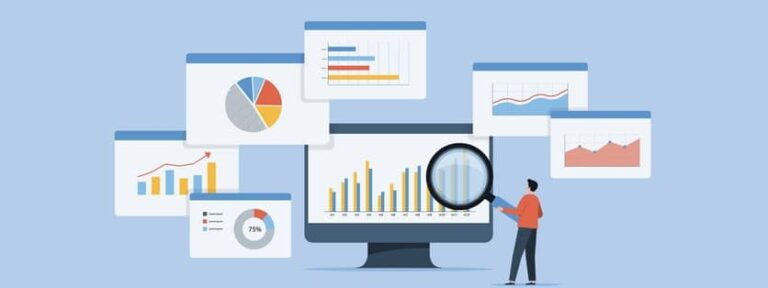One critical step in developing any marketing strategy is understanding the target audience. There are many questions you must answer. It helps you know how to communicate with customers.
You must know what they need, their pain points, motivations, likes, and dislikes. You also look at factors outside of the individual. Such include cultural, religious, or social considerations. All these factors will affect their behavior concerning product or service uptake.
Our article explores the effects of consumer behavior on marketing and business operations.
Understanding consumer behavior
In defining consumer behavior, let’s use an analogy. Let’s say you want to move several vehicles to Europe. In looking for a service provider, what are some things you would do?
The first would be to research reputable companies you can work with. Their core area of expertise must be the transport of cars to European destinations.
You will then visit their website to look at specific things. Such include pricing, car delivery timelines, and collection points within Europe. You will also check certification, insurance for the vehicles and so much more.
But it doesn’t stop there. The research will also include reading customer reviews. Such show that they can deliver as per expectations.
What you have undertaken is a systematic approach to finding a service provider. Through research, you get to understand them beyond their basic service offering. What are their brand values?
Do their values align with yours? How do they position themselves in society? Such Information helps you create an emotional connection with the company.
Reading customer reviews allows you to create a perception. It determines the final decision to use them as the car transporter of choice.
From the above, it becomes easy to understand consumer behavior. It is a systematic approach a customer takes before making a purchasing decision. It also incorporates their physical, emotional, and mental state before buying.
There are several facets to consider. Such include:
- The emotive connection with specific products, brands, or services
- Motivational factors that will make customers choose one product over another
- How the everyday environment impacts perception and buying decisions
- Group or individual decisions to buy a product
- Social, psychological, or personal factors that determine buying behavior.
Marketers must consider all these factors when coming up with a marketing strategy. It helps determine the best approach to use, depending on the target audience and what they need.
How consumer behavior impacts marketing and business operations
A typical customer will decide to buy based on 3 specific factors.
- Personal considerations like gender, age, or culture.
- Psychological factors like attitudes and perceptions.
- Social considerations like education, income, family, and friends.
All these will impact the type of consumer behavior. There are four categories you need to be aware of. These categories are critical for segmenting customers. It makes it easier to target messaging to respond to the different motivations.
- Complex buying behavior requires high investment. Think about buying a house or expensive equipment. The customer is likely to do a lot of research. They will also be very involved in the buying process.
- Dissonance-reducing buying behavior arises due to difficulty in differentiating between brands. The buyer will take part in the buying process. But, even after buying they may still remain unsure about their final decision. Such customers need a bit of convincing. They respond well to messages around USPs and positive reviews.
- Habitual buying behavior does not rely on brand loyalty. Think about picking your favorite milk brand every time you go grocery shopping. Subliminal messaging that keeps your product top of mind works well for such groups.
- Variety-seeking buying behavior is for the more adventurous. These customers always want to try something new, even if the last one worked fine. Such segments respond well to advertisements and marketing campaigns.
So, how can businesses use the insights in marketing and operations?
1. Understanding consumer behavior informs every part of the marketing strategy
Understanding consumer behavior determines the best way to reach audiences.
Let’s take the example of complex buyers. Marketers must ensure the following when developing a marketing strategy targeting this segment.
- SEO optimization to ensure high rankings on the search engines
- Relevant content that provides tons of information on the products. Marketers can use blogs, video content, white papers, and case studies.
- Link building strategies so that they build the brand as an authority in the field.
- Maximize PR opportunities for third-party endorsement.
- Plenty of testimonials from satisfied customers
Such customers want to deal with the best. Why should they pick your brand or products over the competition? What are your USPs? Who endorses this fact?
2. Role of research in understanding consumer behavior
Research is a critical tool for getting relevant insights. The internet provides a fantastic platform to understand consumer behavior. It is cost-effective, flexible, and an excellent platform for reaching audiences.
Marketers get access to analytics on advertisement impact, web content, and page views. Such provide insights on what customers like or don’t. It also shows whether the marketing strategies are working or not.
3. Awareness creation
Need recognition is the first step in deciding to buy. Think about how insurance agents get people to buy products. They present a problem and follow up with how they could be the solution provider.
Listen to their final rights insurance spiel. They start by appealing to the customer’s emotions. You would not want your loved ones to suffer from heavy funeral bills, would you?
Marketers can use tools like PR, advertising, and marketing campaigns to reach audiences.
4. Sales forecasting and market sensing
Insights from customer behavior help with sales forecasting. The teams can project sales for specific markets around specific timelines. They use a combination of qualitative and quantitative data for forecasting. It could be past sales, expert opinions, or past buying behavior.
Market sensing is the collection and compilation of qualitative data. The teams use such to create an information database. The process uses different methodologies. Such include focus groups, interviews, and questionnaires to get the necessary information.
The data provides critical insights for understanding the market and for decision-making purposes. It also helps in creating a competitive edge. The business bases decisions on customer behavior insights.
Final thoughts
Developing a sound business strategy starts with a good understanding of consumer behavior. Clarity on what motivates customers to buy is critical. Only then can you develop action plans that respond to the identified customer needs.









